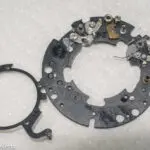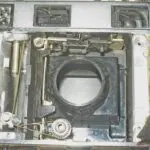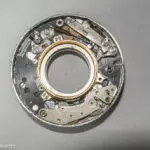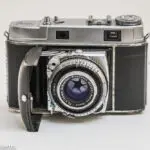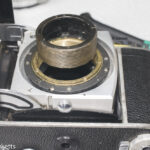The Kodak Retina Reflex III is a 35 mm, single lens reflex camera made by Kodak AG in Stuttgart, Germany between the years of 1960 and 1964. The camera features an inbuilt light meter, a split image rangefinder in the centre of the focusing screen and interchangeable lenses.
Kodak Retina III Images
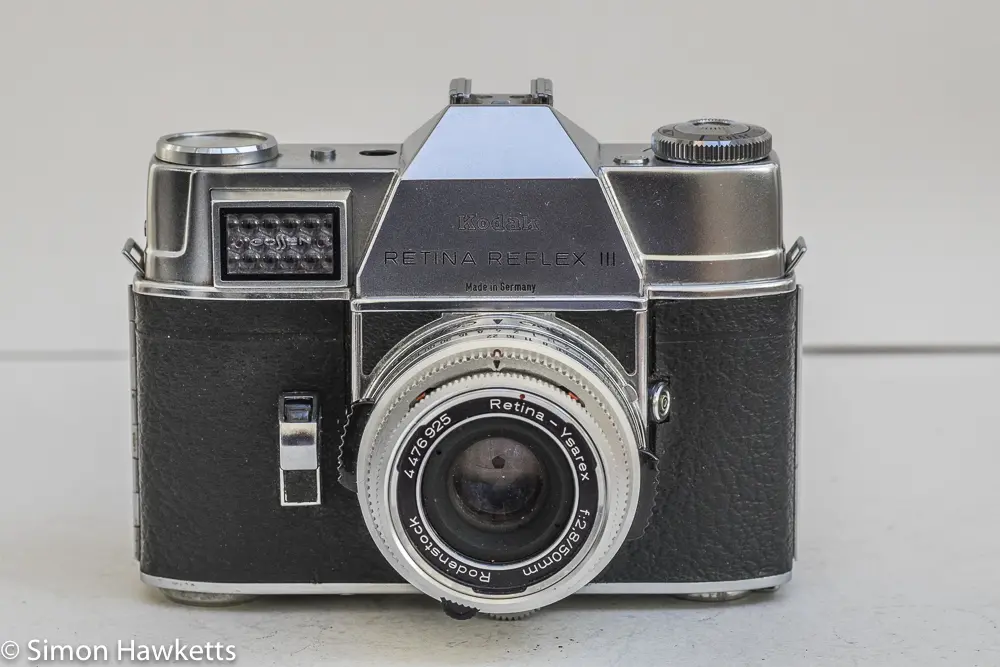
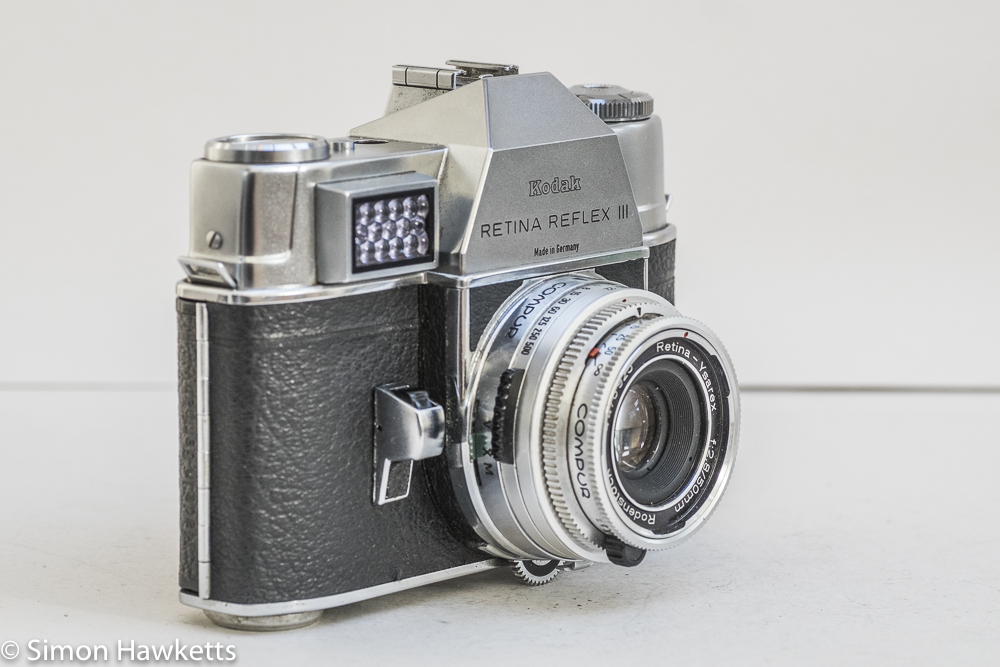
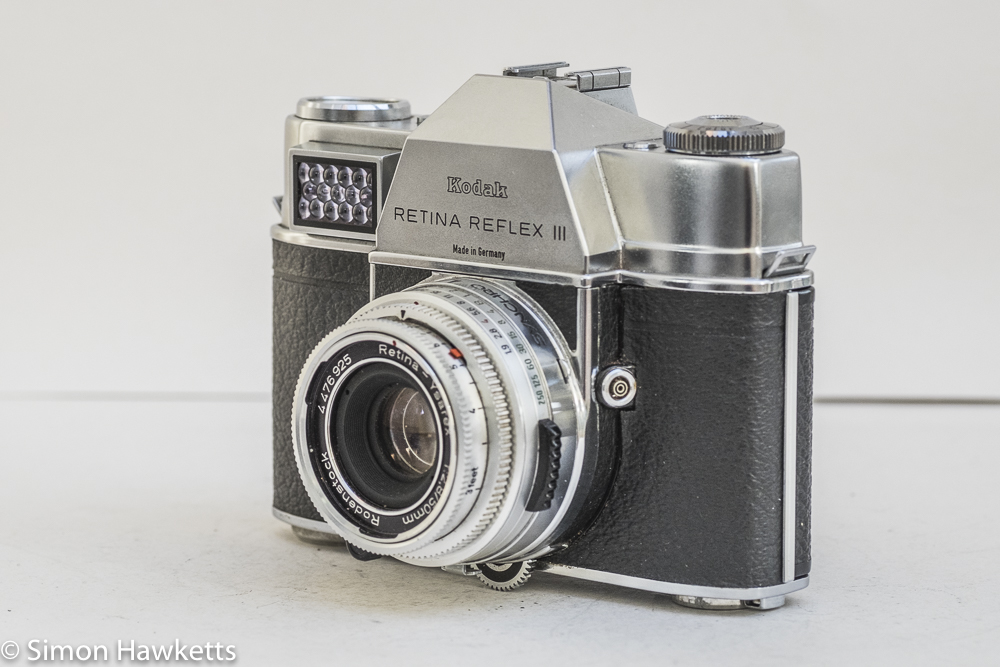
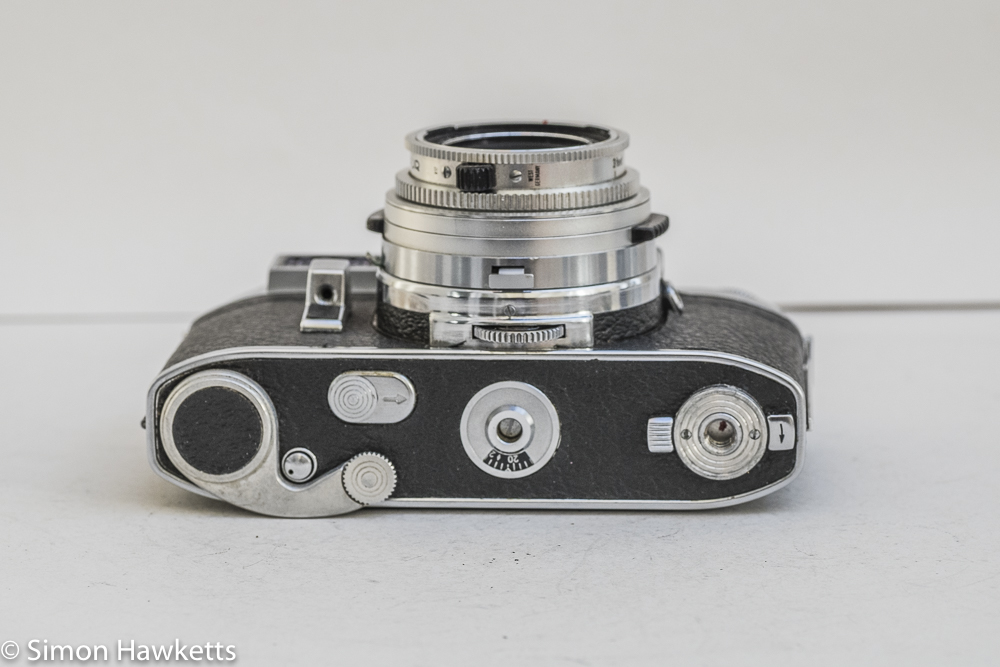
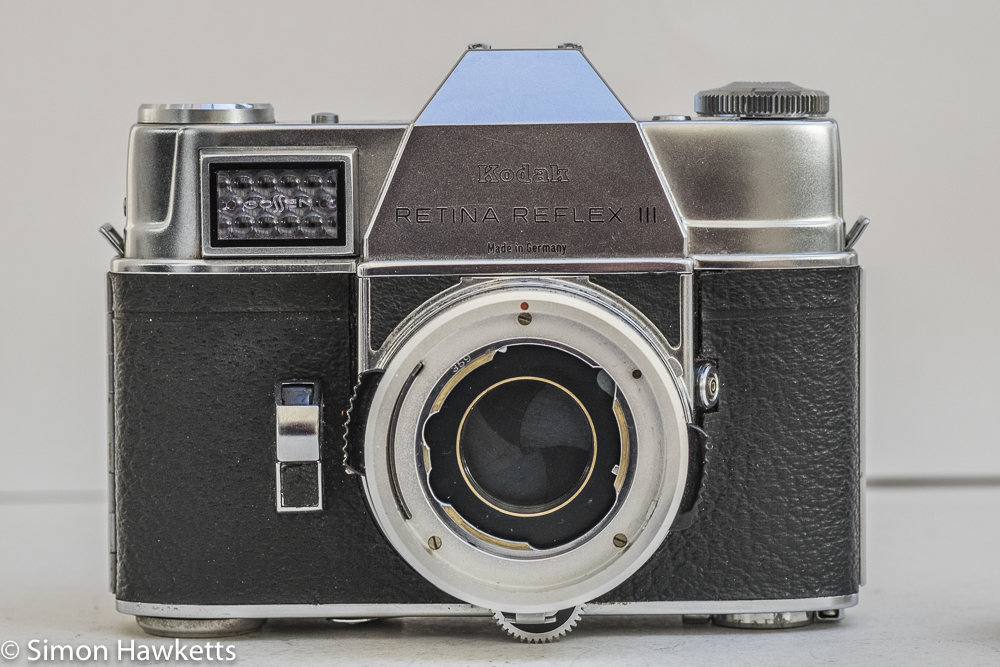
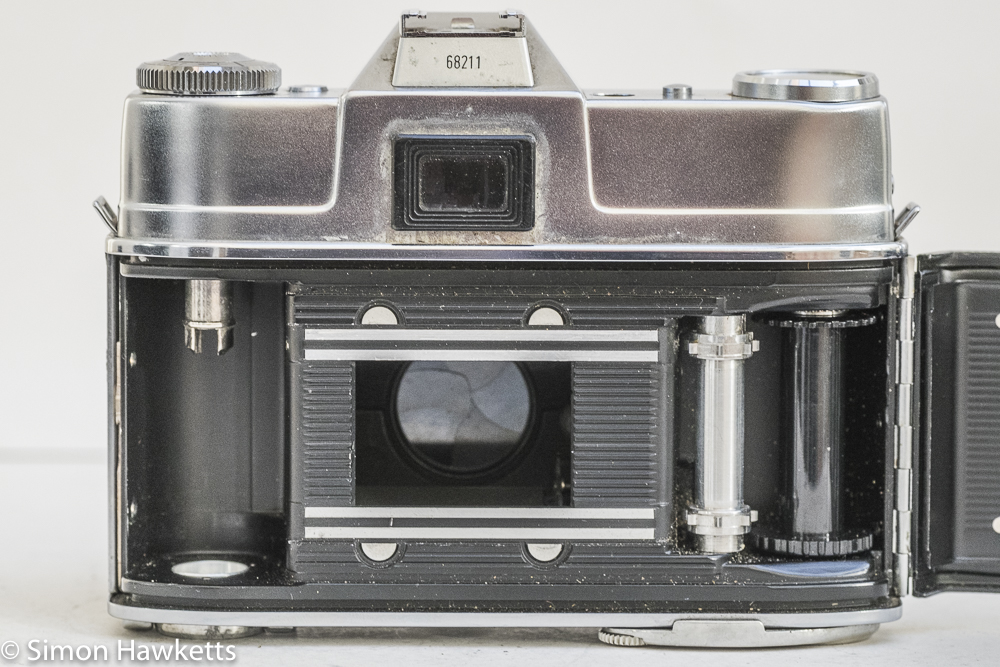

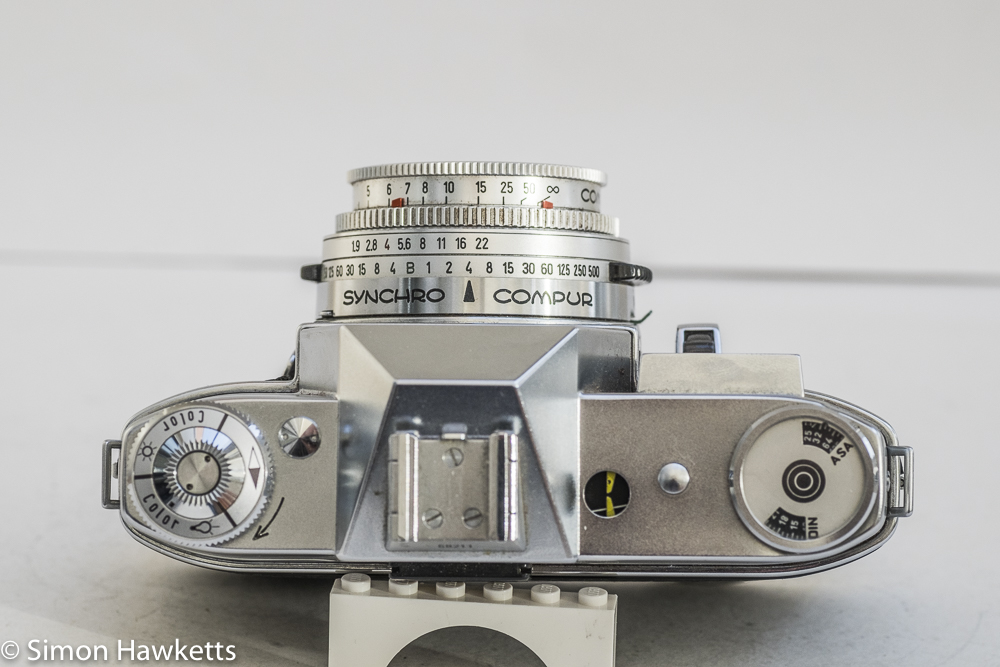
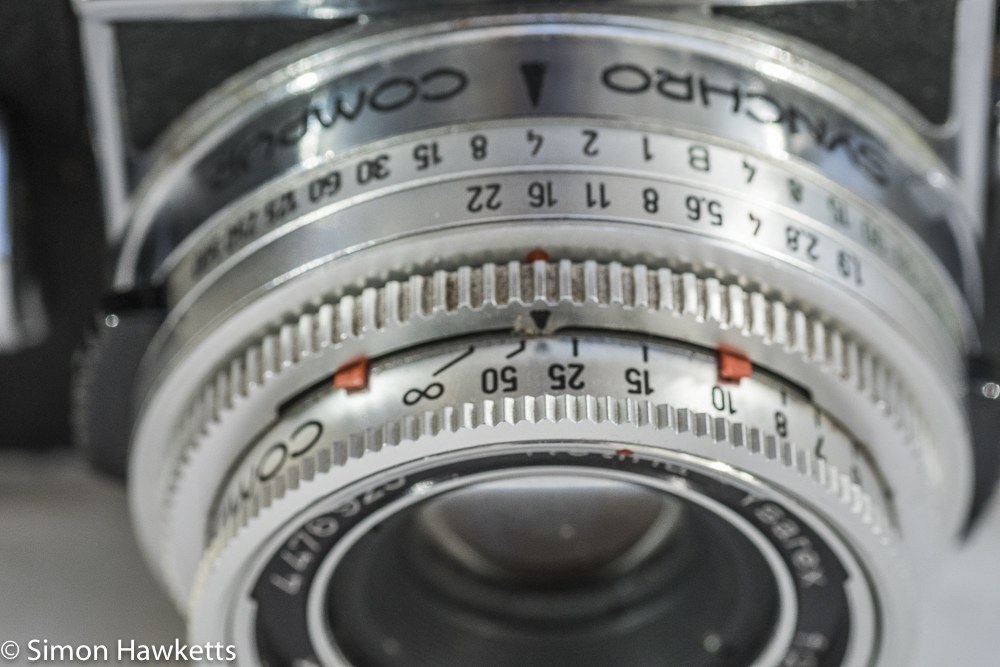
My Kodak Retina Reflex III Camera
I found this camera on eBay in an auction starting at only £10. Most Retina Reflex cameras I've seen on eBay are either in expensive 'Buy it now' sales or have a starting price around £50, so I immediately became interested in this unit. It looked in good condition, although the seller was selling it a faulty because although the film advance was working and the camera 'clicked', the shutter wasn't opening. I like to buy faulty cameras, so I can improve my repair skills, so I decided to take a chance and think I was very lucky to get this model for only about £15.
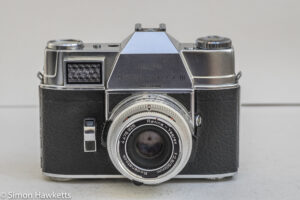
When the unit was delivered, I found that the seller had been quite accurate with his description. The film advance is working and the light trap which covers the film when the film advance is moved is correctly slotting into place, but the shutter itself is not opening.
This means the viewfinder remains dark, although I can see a change in the viewfinder as the film advance is moved, which suggests that the mirror is also lowering into place. I think that the part which is wrong is the cocking rack is not cocking the shutter - possibly something I can't fix until I can get a replacement cocking rack, although I won't know until I get the camera apart.
Cosmetically, the camera is in fine shape. There is hardly a mark on the body, the covers are perfect, the light meter seems to respond to light and the controls all seem to move properly. I'm not certain that the aperture / shutter speed settings are accurate because the control is quite hard to turn, but this is something I will sort out as I repair the camera over the next few days and weeks.
Kodak Retina Reflex III Description
The Retina Reflex III is in the class of single lens reflex camera which have a leaf shutter in the lens mount rather than a focal plane shutter in front of the film. This means that the mechanics to control the shutter are much more complex than in more conventional designs. Presumably the reason for this is because the Retina Reflex series were based on the rangefinder series of Retina cameras, and so it made sense to keep as much the same as possible.
To explain the complexity, just consider the actions the camera has to take when the user wants to take a picture:
- The film advance lever is wound, and the film advanced one frame
- Inside the film chamber, a light screen is lowered over the film
- The mirror is lowered into position so that the photographer can view the scene in the viewfinder
- The shutter is cocked and opened, so the image can be viewed
The photographer can then view the scene, focus, set the exposure and take the picture. When the release is pressed, the camera has to:
- Close the shutter
- Raise the mirror
- Raise the light screen
- Open the shutter at the correct aperture and at the correct time to expose the film
- Close the shutter
As you can see, these are a fairly complex set of actions, and the mechanics to make them happen is also quite complex.
When it comes to setting the exposure, the camera has a light meter built in which is directly coupled to the aperture and shutter speed. This means the photographer just needs to turn the exposure controls until the meter needle is set to the middle of the dial.
There are actually two meter readings on the Retina Reflex - one on the top panel of the camera and another which displays in the viewfinder. There is also a convenient dial at the bottom of the camera which allows both the shutter speed and the aperture to be set together. Although this doesn't seem to work completely accurately on my camera, I'm pretty sure that it should be possible to set the exposure with the dial and then tweak either the aperture or the shutter speed and the camera will automatically set the other parameter.
To focus the image, there is a rangefinder style split image in the centre of the viewfinder. Again, on my camera this is a bit difficult to see because the shutter doesn't cock, and therefore the shutter remains closed, but this arrangement was a fairly standard one for many manual focus cameras.
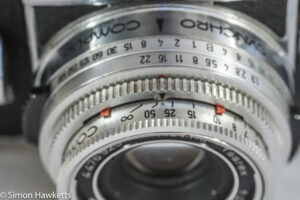
The lens fitted to my example is a Rodenstock Retina Yarex 50 mm f/2.8 lens, but multiple different focal lengths were available for these cameras as well as close up attachments, lens hoods etc. One oddity would be that the aperture scale shown on the lens mount would not always agree with the lens fitted to the camera. For example, if a 200 mm f/5.6 lens was fitted the scale would still run from f/1.9, but the lenses largest aperture would be f/5.6. On other cameras of this type, the aperture setting only starts to have an effect when the scale setting agrees with the lens - I'll see what the retinal reflex does when I get it apart and working properly.
One particularly nice feature, but another indication of the complexity of the mechanics of this camera, is the way the depth of field markers on the front of the lens move to show the narrowing depth of field as the aperture is opened up.
Of course, as with all designs, there are also advantages of the way the Retina Reflex was made - because it is fitted with a leaf shutter it is flash synchronized at all shutter speeds.
I hope in the next few weeks I'll follow up this post with some repair posts as I dig into the internals to try to find what is wrong with it.
Kodak Retina Reflex III specifications
- Kodak Retina Reflex III 35mm single lens reflex
- Lens mount compur leaf shutter
- Shutter speeds 1sec to 1/500sec + bulb
- Rangefinder split image focus aid
- Match needle metering in viewfinder and on top plate
- Flash sync at all speeds
- Frame counter on bottom of camera
- Shutter lock when film full
- Film advance clutch allows multiple exposures if required
- Accessory shoe
- Film type reminder
- Self timer
- Inbuilt light meter
- Light meter range ISO 10 to 3200
- Front mounted shutter release
- Interchangeable lenses with bayonet mount
- Rodenstock 50mm f/2.8 lens fitted
- Manual available on line here
